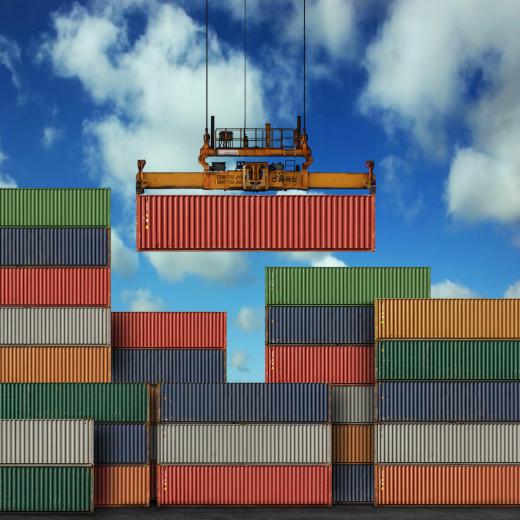Transshipment is a shipping activity where goods are transported to a third party or intermediate location before being sent to their final destination. There are a wide variety of reasons for shippers to engage in this activity and some ports and rail hubs specifically design and market themselves to be friendly to transshipment activities for the convenience of shipping carriers. Trade regulators and other government officials may monitor these locations carefully because while there are legitimate reasons to transship, fraud can sometimes be involved.
One of the most common reasons to use transshipment is that it is not possible to move a cargo from the origin to the destination in one leg. This may be because a destination port is closed or temporarily embargoed, because no shipping method goes from one point to the other, or for a number of other reasons, such as inclement weather that prevents passage of a shipment. Changes to shipping methods as goods are moved from boats to trains to trucks can also be a reason for transshipment.

Some shippers make bulk shipments from their origins to transshipment centers, and then break the loads up into smaller loads for different individual destinations. This can be cheaper than sending the goods directly, especially if the origins or destinations are remote or difficult to access. Likewise, multiple shippers may pool resources on a transshipment project in order to cut costs associated with shipping and make sure that their goods arrive efficiently at the other end.

There are risks associated with transshipment, including a greater chance of loss or damage. Special insurance may be required to cover the goods being shipped and in some cases shippers may be specifically ordered not to transship goods because there are concerns about security or safety. Every time goods stop or are transferred, vulnerabilities are created, especially if the goods need to be warehoused or stored temporarily, and this may generate concerns about the safety of a shipment.

Fraudulent reasons to use transshipment include the desire to conceal the country of origin on a shipment or attempts to evade taxes, tariffs, and other penalties. Concealing country of origin can be accomplished by shipping goods to a third party and then redoing the shipping labels to make the load appear to be originating from the third party. This may be done to evade embargoes, move smuggled or illegal products, and for other reasons.
Ever since she began contributing to the site several years ago, Mary has embraced the exciting challenge of being a About Mechanics researcher and writer. Mary has a liberal arts degree from Goddard College and spends her free time reading, cooking, and exploring the great outdoors.

